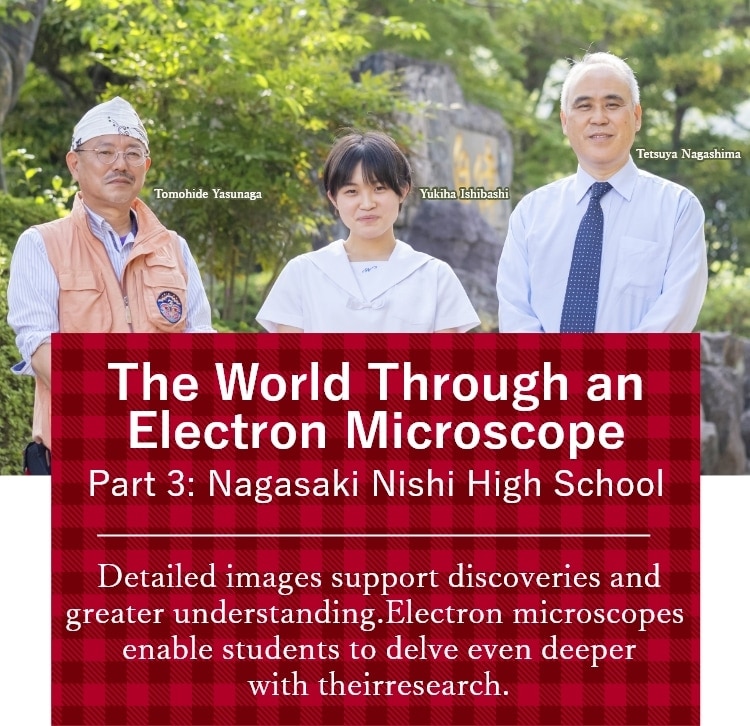
Nagasaki Nishi High School has been designated as an SSH (Super Science High School) by Japan's Ministry of Education, Culture, Sports, Science and Technology since 2005. The school has developed an advanced curriculum in science and mathematics, and nurtures human resources in science and technology.
The school's SSH program is unique in Japan, in that all students participate. All students from the first to the third grade are involved in each of its missions, whether they are studying the sciences or the humanities. In addition, the extra-curricular science club conducts research projects in various fields including physics, chemistry, biology, and earth sciences, and has won numerous awards at national-level research presentation competitions.
This time, we talk about the school's research activities and the role of electron microscopes with long-time biology club advisor Tetsuya Nagashima, part-time lecturer Tomohide Yasunaga who is continuing his research as a professor of agriculture, and Yukiha Ishibashi, a third-grade student who won the Grand Award at JSEC 2021* for her research on the hovering mechanism of hover flies.
*JSEC: Japan Science & Engineering Challenge for students of high schools and technical colleges
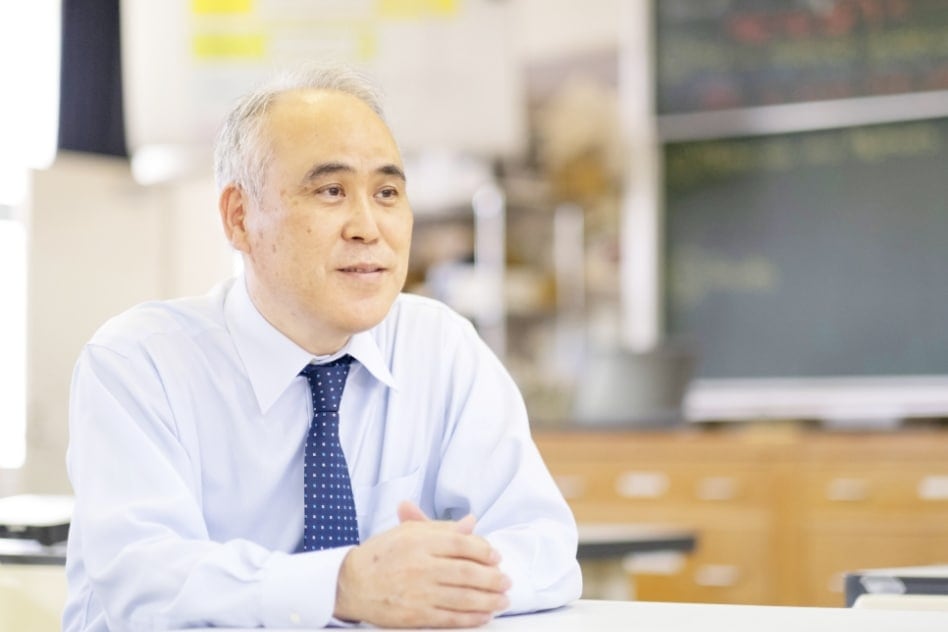
Nagasaki Nishi High School
Tetsuya Nagashima, Teacher
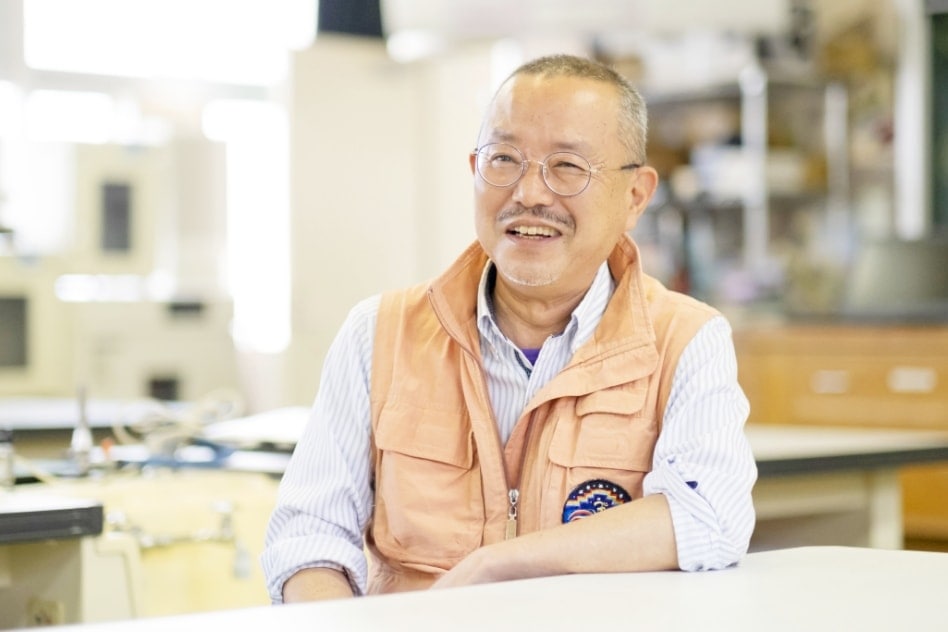
Research Associate, American Museum of Natural History
Tomohide Yasunaga
Nagashima : Around 100 students participate in the science club's activities at Nagasaki Nishi High School each year. It's now 17 years since I took up my post at this school, and even prior to that, the students here were working on their research activities under the enthusiastic guidance of their teachers to apply for national-level competitions such as the Japan Student Science Award and the JSEC. I believe that this atmosphere in the school and the diverse natural environment of the surrounding area have led to their successive research achievements.
Yasunaga : I agree. For example, Omura Bay is home to many species of water strider, and this area has an environment that is considered rare in Japan and also the rest of the world. One of the school's assets is its proximity to such places and environments, as was the case a few years ago when students discovered a new species of water strider through their research. The importance of investigating real, actual things in the field is something that all research activities have in common.
Nagashima : When we take students to places like this, their eyes often light up and you see them get really engaged. The biology club traditionally lets first-grade students new to the club gain hands-on experience in breeding living organisms and cultivating plants at school. I think this experience really helps them improve their breeding of organisms for experiments in their own research activities from second grade onward.
Ishibashi : The reason I joined the biology club was that when I was looking into all the clubs, the third-grade senior students really took the time to properly tell me about their activities. Before I came to the school, I honestly didn't know that Nagasaki Nishi High was an SSH or that it had won awards, and I knew nothing about electron microscopy. The fact that the third graders were able to explain the details of their advanced research in a way that even I could understand is what attracted me to the biology club.
Nagashima : This enthusiasm and willingness to explain the details of their research in an easy-to-understand manner is something the biology club has always had. The research topic of Ishibashi and her colleague, titled "Hovering Mechanism of Hover Flies," was actually a continuation of the work of her seniors. Isn't that right?

3rd Grade Student, Nagasaki Nishi High School
Yukiha Ishibashi
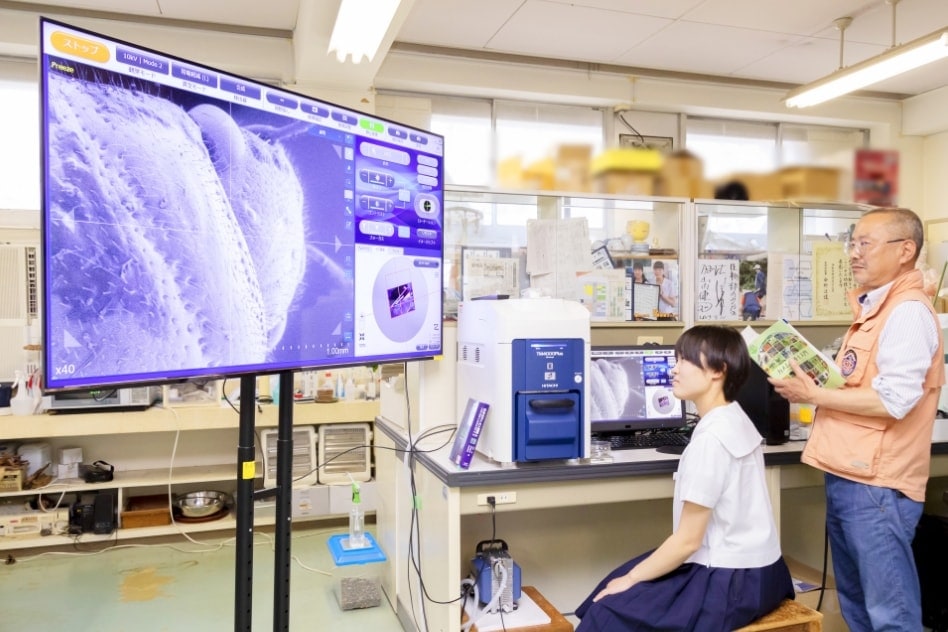
Yukiha and Mr. Yasunaga using the desktop electron microscope
Ishibashi : I heard that my seniors had done some prior research on insect hovering, and after hearing about the clever and interesting way hover flies hover, I decided I wanted to follow up on their work. So, I started research together with Furugen, as she was also interested in the hovering mechanism.
Nagashima : The amazing thing about the girls is that they were able to recreate the movement of the wings so that they could measure the forward force and the upward force, respectively, using a device akin to a balancing, perpetual motion desk toy. Their physics teacher was also impressed by this device. They used the protective seals from the back of a medical compress for the wings. I was amazed at their ingenuity and how hard they worked to reach a solution without ever giving up.
Ishibashi : It took some trial and error before we completed the measuring device, but I enjoyed doing it because I've always loved arts and crafts. The idea of using medical compress protective seals came to me when I was applying one to a sore muscle during a school competition and I thought that they could help recreate the delicate characteristics of the wings.
Nagashima : The key point in this study was the discovery that a hover fly could use its muscles to change the angle of its wings. The "Miniscope" tabletop electron microscope played a major role in the discovery of the unique structures that make this movement possible. When I heard that we could borrow an electron microscope from Hitachi High-Tech, I was hopeful that this would allow my students to delve even deeper with their research. I think the girls' research has proven this to be the case.
Ishibashi : The electron microscope was smaller and easier to use than I had expected. I was impressed when I could actually see the muscles moving in the image. Furugen and I are currently preparing for our ISEF* presentation, which includes providing a briefing and question and answer session in English. There is still a lot to study about the hovering mechanism of hover flies, so I would be delighted if my junior classmates felt they wanted to tackle the subject and take it even further.
* ISEF : International Science and Engineering Fair
What is particularly impressive about this research is the fact that we were able to produce outcomes that no one had previously been aware of, using a device that we created ourselves. When I first used the electron microscope, there was so much information in the image that I didn't know where to focus my attention. The microscope helped us to make one of the major discoveries in this research project; namely, the unique structure connecting the wings and the torso. I haven't decided on what my dream is for the future yet, but I hope to continue field work at university now that I know how fun it is.
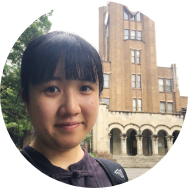
From Experiencing the Joys and Hard Work of Field Research in Omura Bay to Studying Water Striders at University
Discovered a new species of water strider in the seas around Omura Bay, named and described as the "Nagasaki water strider."
JSEC Finalist
Haruka Asanabe
Graduated in 2018
Currently in 4th Year at the College of Arts and Sciences at the University of Tokyo
One of my most memorable research activities at Nagasaki Nishi High School was running around the coast of Omura Bay collecting water striders. It gave me hands-on experience of the fun and the hard work involved in field research. As for electron microscopes, people always say this, but you can see everything in so much detail! I found that really impressive. It was thanks to an electron microscope that I was able to discover differences in the surface structure of eggs and the structure of the tip of the ovipositor. My experiences at high school not only gave me a love of all living things, but also made me want to contribute to society as a researcher. At university, I am studying the saltwater adaptation of freshwater water striders. My goal for the future is become a researcher of water striders. I am absolutely fascinated by the ecology and evolutionary processes involved in them having adapted to the unique environment on the water's surface.

Mysterious Pit Found by Electron Microscope Leads to Research Outcomes
Discovering a mediopronotal pit in the Japanese plant bug Ernestinus kasumi revealed that this structure is common to species living in groups.
JSEC Finalist
Karin Motomura
Graduated in 2019 and currently in 4th Year at the Faculty of Science and Engineering at Saga University
In our research, we used an electron microscope to study the biological structure of the Japanese plant bug Ernestinus kasumi. What left a lasting impression on us was how this enabled us to see images of the organisms we were studying that looked like those published in reference books and materials. At university, I am conducting research on electronic devices.
JSEC Finalist
Nanako Ikeda
Graduated in 2019 and currently in 4th Year at the Faculty of Agriculture at Saga University
As the Japanese plant bug Ernestinus kasumi is a mere 3 mm in length, the electron microscope was very useful for observing its morphology. My research activities got me into the habit of thinking about and investigating things for myself. In the future, I hope to deepen my understanding of life sciences and food sciences, and apply the knowledge I learn to make the world a better place.
JSEC Finalist
Akihiro Tagawa
Graduated in 2019 and currently in 4th Year at the Faculty of Environmental Science at Nagasaki University
The first time I used an electron microscope, it completely changed everything I thought I knew about microscopes. What's changed as a result of my research is that I have now become more inquisitive about all kinds of things. In the future, I would like to work abroad, particularly in developing countries to which I feel I could contribute.

Inspired by Presentations Given at International Conventions by Other Young Researchers from Around the World
Used an electron microscope to identify the sound-producing organs of the Japanese runner plant bug and detect its sound patterns.
JSEC finalist, and awarded First Prize by the Acoustical Society of America at ISEF
Haruka Hinami
Graduated in 2020 and currently in 3rd Year at the Faculty of Agriculture at Saga University
My research came about as I thought it would be great if I could see, with my own eyes, insects that are a mere 3 mm in length, when they are making sounds. I mainly used the electron microscope to research the structure of the sound-producing organs and the odor glands. However, I remember my surprise at how clearly the protuberances from the sound-producing organs came into view. My research activities taught me the joy of uncovering the unknown, and I felt a sense of accomplishment from working with my team members to overcome challenges. This is what inspired me to do my best in my research at university too. At international conventions, I have been inspired by presentations given by other researchers of similar age from around the world. In the future, I hope to research the relationship between insects and their habitats, and contribute to better understanding their ecology and preserving their ecosystems.

Discovered Morphological Features and Presented a Paper for a Research Project for the SSH Program
Discovered an organ presumed to be a secretory gland in the thoracic microstructure of the Japanese plant bug Pilophorus.
Kenshiro Fukuda
Graduated in 2021 and currently in 1st Year at the School of Medicine at University of Kurume
Our research was not part of a club activity, but rather part of a research project for the SSH program. The structure that we found appeared to be smooth to the naked eye, but when we looked at it through an electron microscope, we found that there were a lot of protrusions, and we surmised they were producing secretions from them. I was not sure if I would be able to see my research through to its conclusion, as no one else in our group had chosen biology. However, with the help of my team members and a lot of plant bugs, I was finally able to publish my paper. I was able to prove that I could produce results through my own hard work, which gave me confidence in myself. I am now studying medicine, physics, chemistry and biology at university. At the moment I rely on people's support. But in the future, I hope to become the one who gives other people support, by becoming a doctor whom people can rely on, wherever I go.

Nagasaki Nishi High School educational policy is “autonomy”. Students have this in mind when taking on voluntary challenges for their their SSH activities in various fields. In order to build the foundation for such research activities, traditionally in the biology group, 1st year students are entrusted with breeding and cultivation of organisms. By inheriting the care of creatures such as Degu, Newt, Turtle, Terrapin, and Devil’s backbone, their interest in ecology and observational skills are nutrtured by their seniors. This comes in useful at the time of research into cultivating organisms.
